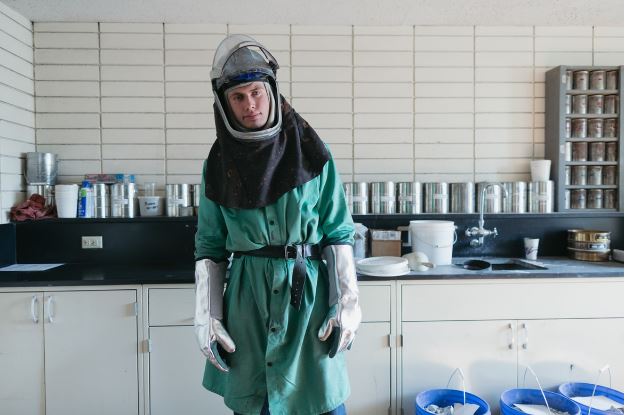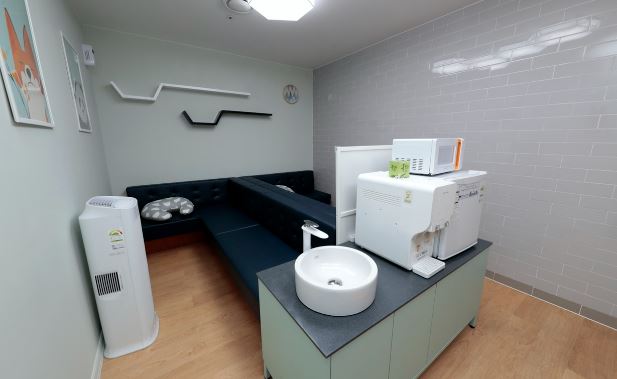
It’s important that people are proactive when it comes to safeguarding their health. That’s why they need to check their vaccination status and have regular checkups.
You may be surprised to discover how frequently the average person is exposed to hazardous chemicals. Due to the popularity of personal care products, women are exposed to about 168 chemicals daily. While it’s impossible to avoid every single one, there are steps you can take to minimize the risk. In this article, we’ll discuss 8 tips for reducing your exposure to hazardous chemicals.
1. Be Informed
There are many resources available that can provide you with information on this subject. Blogs and specialist websites are a great way to stay up-to-date on the latest news and advice. In addition, awareness campaigns and events are often held by government agencies and non-profit organizations.
Paraquat is a herbicide that’s used by some for grass and weed control, although it’s banned in the EU and beyond. It’s concerning that there are U.S. states that still use paraquat despite instances of poisoning, and toxicity levels in animal testing. There are also links between Paraquat and Parkinson’s Disease and records of an accidental death case. Knowledge is power, and research can help you know what to specifically avoid.
2. Read Product Labels Carefully
These labels are required by law to provide certain information about each product. This includes the identity of the manufacturer, a list of ingredients, and any precautions that should be taken when using the item. The label will also indicate if the product is flammable, corrosive, or otherwise hazardous.
When reading labels, it’s important to look for both the signal word and pictogram. The signal word indicates the level of hazard, with “Danger” being the most severe. The pictogram will show what type of hazard is present. For example, a flame icon indicates a fire hazard, while a skull and crossbones indicate a toxic hazard. If you can’t find a label on a product (or it’s not written in English), don’t use it. If you have any questions about the item, contact the manufacturer or check their website for more details.
3. Use Personal Protective Equipment
Personal protective equipment (PPE) is clothing or equipment designed to protect workers from injuries or infections. When working with hazardous chemicals, always wear the appropriate PPE for the task. Be sure to read the manufacturer’s instructions on how to properly use and care for your PPE. Don’t wear loose-fitting clothing or jewelry when working with chemicals. Clothing should be made of non-absorbent material, such as polyester or nylon.
If you’re working with a hazardous chemical, wear gloves that are impermeable to the chemical. Be sure to remove any rings or other jewelry before putting on gloves. Eye protection is essential when working with chemicals. Wear goggles or a face shield when working with chemicals that could splash or generate dust. Respiratory protection should be used when working with airborne hazards such as dust, mists, vapors, or fumes. If possible, work in a well-ventilated area to minimize exposure.

4. Ventilate Your Home
Ventilating your home will help to remove any harmful chemicals that may be present in the air. There are a few different ways that you can achieve this:
- Open windows and doors on a regular basis to allow fresh air into your home.
- Install an exhaust fan in your kitchen and bathroom to help remove any harmful fumes.
- Make sure that any fireplaces or woodstoves are properly vented so that harmful gases aren’t released into your home.
- If you have a central air system, make sure that it’s properly maintained and that the filters are regularly replaced.
5. Use Natural Cleaning Products Wherever Possible
Most cleaning products contain a cocktail of hazardous chemicals that can be easily absorbed through the skin or inhaled. They’ve been linked to a variety of health problems, including cancer, reproductive issues, and endocrine disruption.
Wherever possible, opt for natural cleaning products that use ingredients like vinegar, baking soda, lemon juice and essential oils. These products are just as effective as their chemical-laden counterparts but don’t come with the same risks. If you can’t find natural alternatives:
- wear gloves
- ventilate the area
- store these products out of the reach of children
6. Be Wise With Food
Many processed foods contain harmful chemicals that can be absorbed through the digestive system. Some practical examples include packaged snacks, frozen dinners, and canned soups. This is why it’s important to buy fresh fruit and vegetables for your daily diet.
Pesticides and other harmful chemicals are often used in conventional agriculture. Choosing organic produce whenever possible is a great way to minimize your exposure to these chemicals. Some practical examples of organic produce include fruits, vegetables, and grains.
7. Filter Your Water
Tap water is often contaminated with hazardous chemicals like lead, chlorine, and fluoride. These chemicals can have harmful health effects, including an increased risk of cancer and reproductive damage.
Water filters can remove these contaminants, providing you with clean, safe water to drink. There are many different types of water filters on the market, so be sure to do your research to find the best one for your needs.
8. Avoid Plastic Packaging
Plastic packaging is made from petroleum-based chemicals and it can leach these chemicals into the food or beverage it contains. It’s especially harmful when heated, as in the case of microwaving. So what are some safer alternatives to plastic packaging? Glass, ceramic, and stainless steel containers are all great options. When possible, buy products that come in these types of containers instead of plastic.
You can also find some reusable plastic containers that are free of harmful chemicals like BPA. They’re a great option for storing leftovers or taking your lunch with you on the go. Just be sure to wash them thoroughly between uses.
These have been 8 tips that can help reduce your exposure to hazardous chemicals. There are more, so why not go online and do some further research? With a few practical changes, you’ll have more peace of mind and will be protecting yourself and your family as a result.






